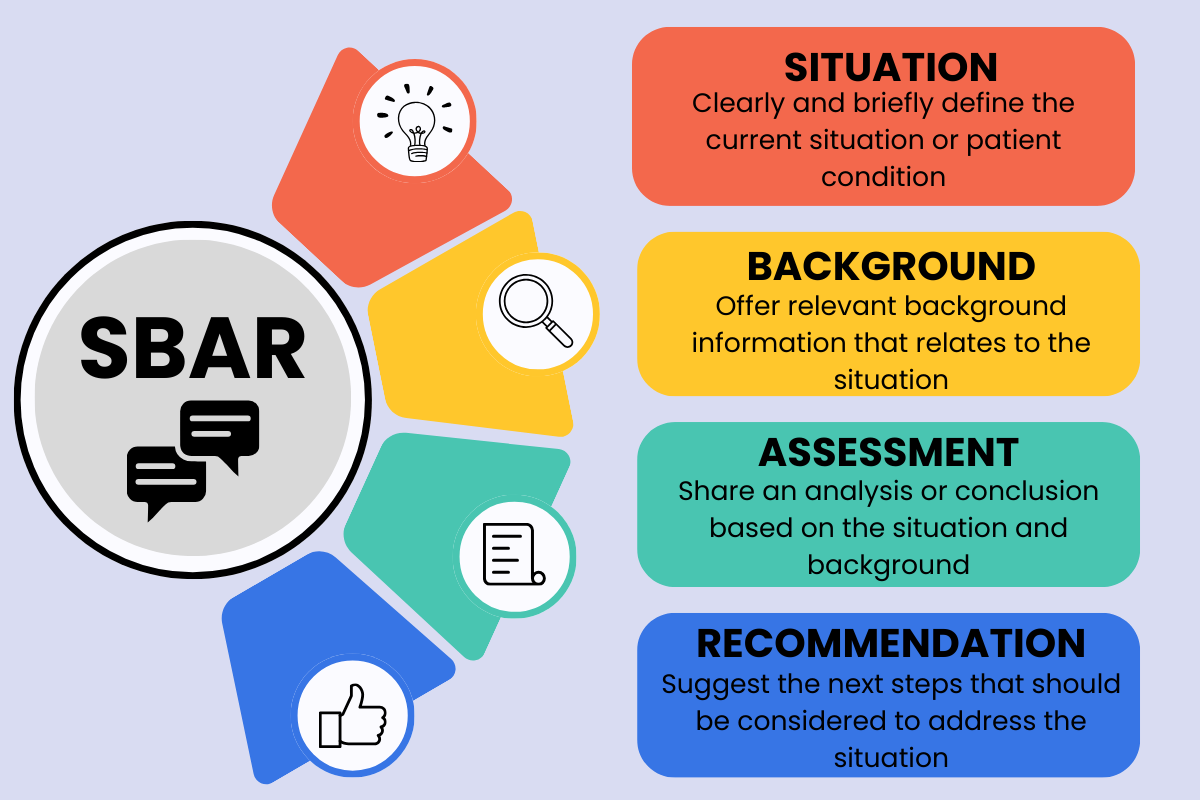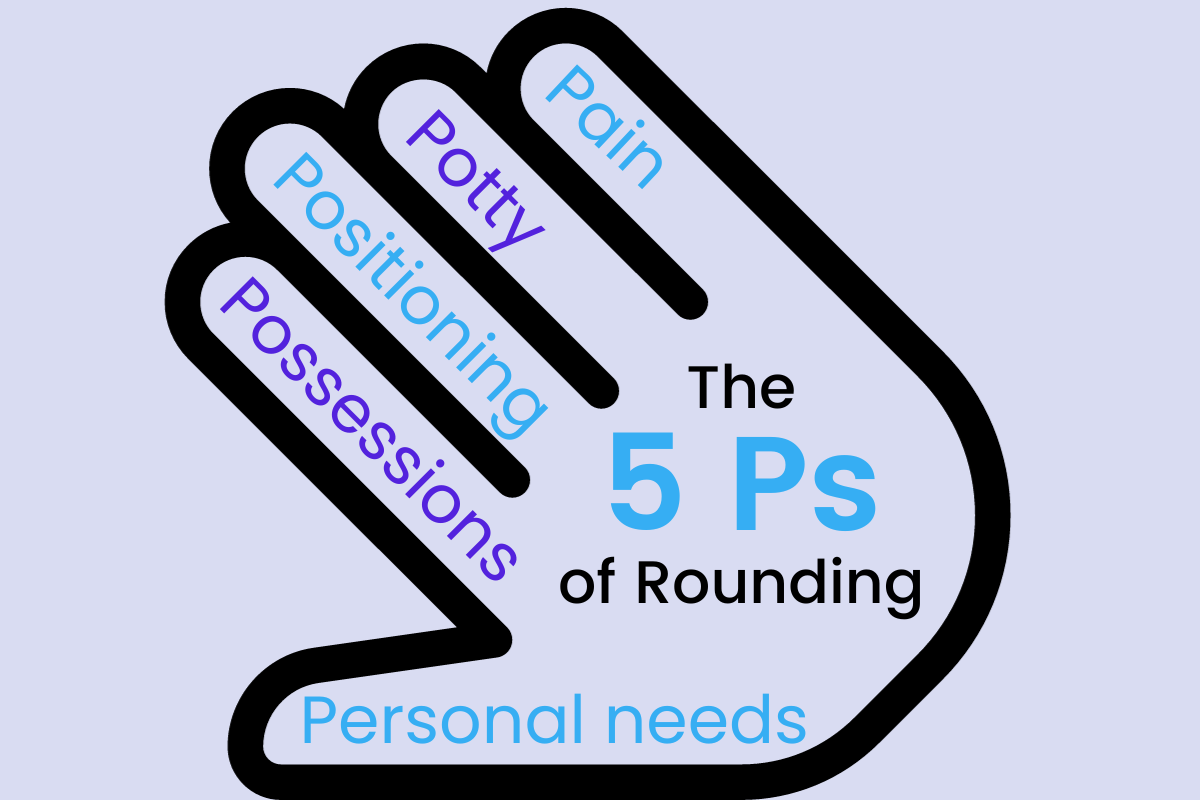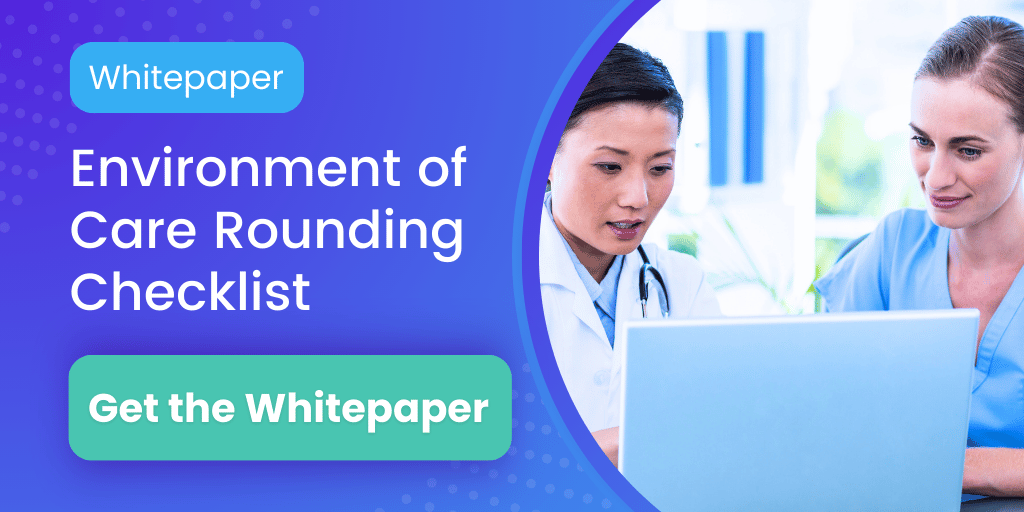5 min read
Best Practices for Patient Rounding: Improving Patient Experience
Performance Health Partners
January 29, 2024
Patient rounding is a pivotal practice in healthcare, significantly influencing the quality of patient care, patient experience, and patient safety. Continue reading to explore best practices for patient rounding and understand how their strategic implementation can profoundly elevate patient well-being and safety.
What Is Patient Rounding?
Patient rounding is the practice where healthcare professionals conduct regular, systematic visits to patients’ bedsides. This process involves more than routine check-ups; it’s a comprehensive approach to assess, communicate, and respond to patient needs while ensuring their safety. By facilitating early identification of health concerns and potential safety issues, patient rounding enables timely interventions and contributes to improved care outcomes.
Patient rounding also enables healthcare teams to:
- Monitor infection control practices and identify early signs of hospital-acquired infections.
- Anticipate and address fundamental patient needs, thereby reducing negative outcomes.
- Foster trust relationships between patients, families, and healthcare professionals.
- Promote efficient communication within the healthcare team, enhancing workflow efficiency and patient care.
Key Practices for Effective Rounding
The following list delineates the essential and strategic practices that are fundamental for conducting effective and impactful patient rounding in healthcare settings.
Use Structured Communication Models
Implementing a structured communication model is crucial. One example is SBAR, an approach that aims to reduce misunderstandings and promote clarity:
-
Situation: Clearly and briefly define the current situation or patient condition. This involves describing the immediate issue or reason for the communication, providing context for the listener.
-
Background: Offer relevant background information that relates to the situation. This may include pertinent medical history, recent changes in treatment, or any other information that sheds light on the current status.
-
Assessment: Share an analysis or conclusion based on the situation and background. This is where healthcare professionals provide their professional judgment or diagnosis of the patient’s condition.
-
Recommendation: Suggest the next steps, actions, or treatments that should be considered to address the situation. This is a critical part of communication as it guides the recipient toward the intended plan of care or response.
When a large hospital system implemented SBAR communication, they saw a 50% reduction in adverse events as well as a 30% decrease in sentinel events.

Another structured approach like the 5ps of hourly rounding can help address patient needs, ensure their safety, and make the unit a better environment. It follows this structure:
- Pain: Regularly assess and address the patient’s pain levels. Ensuring pain is managed effectively is key to patient comfort and recovery.
- Potty: Check if the patient needs assistance with toileting or has any other related needs. This aspect of care is crucial for patient dignity and preventing accidents or falls.
- Positioning: Ensure that the patient is comfortable and properly positioned in bed or a chair to prevent pressure ulcers and enhance circulation.
- Possessions: Make sure that patients’ personal items are within reach and secure. Having their belongings close can make patients feel more comfortable and independent.
- Personal Needs: Address any additional personal needs the patient might have, whether it’s assistance with meals, grooming, or simply needing someone to talk to. This ensures a holistic approach to care.
Implementing a structured communication tool can also improve the communication of key patient information during interdisciplinary rounds, since every department is going off the same format.

Establish a Regular and Consistent Rounding Schedule
Establishing a consistent schedule for rounding ensures that patients know when to expect visits from their healthcare providers, creating a sense of security and reducing anxiety. This predictability not only helps manage patient expectations but also allows healthcare teams to allocate their time efficiently, ensuring that no patient is overlooked.
Moreover, it promotes a structured approach to care, enabling healthcare providers to systematically assess patient needs and address any concerns. By adhering to a regular and predictable rounding schedule, healthcare organizations can enhance patient experience, improve communication, and ultimately contribute to better patient outcomes.
Involve Patients in Their Care
When healthcare providers actively engage patients in discussions about their health, treatment plans, and care processes, it fosters a sense of collaboration and empowerment. This involvement encourages patients to voice their concerns, ask questions, and contribute to decision-making, leading to a deeper understanding of their care journey.
Studies have shown that patients who are actively engaged in their care tend to have better outcomes and higher satisfaction levels. In fact, enhanced patient engagement can reduce readmission rate by up to 14%.
This patient-centered approach also helps in tailoring care to individual needs, thereby improving adherence to treatment and reducing the risk of complications.
Leverage Technology
The integration of tools like electronic health records (EHRs) and mobile health applications into the rounding process allows healthcare providers to access and update patient information in real time.
This immediacy ensures that care decisions are based on the most current data, reducing the risk of errors and enhancing patient safety. Furthermore, healthcare technology facilitates better communication among the healthcare team, enabling a more coordinated approach to patient care.
For instance, digital rounding tools can streamline the documentation process by providing a patient rounding template, allowing healthcare professionals more time to focus on direct patient interaction.
Additionally, these technologies can be used to track patient progress, monitor vital signs remotely, and even provide educational resources directly to the patient’s bedside.
According to a KLAS Research survey of healthcare facilities that implemented patient rounding technology, 37% of the surveyed organizations said they benefited from the immediate feedback, accountability, and compliance tracking functions of the software.
In essence, the effective use of technology in patient rounding not only optimizes the workflow for healthcare providers but also significantly enriches the patient experience by ensuring timely and informed care delivery.
Focus on Patient Safety
During rounds, healthcare providers have the opportunity to conduct thorough safety checks, which include:
- Verifying patient identities
- Reviewing medication regimens for potential errors
- Assessing the patient’s environment for any safety hazards
This proactive approach to identifying and addressing risks is crucial in preventing incidents like falls, medication errors, and hospital-acquired infections. By consistently integrating safety assessments into the rounding process, healthcare professionals demonstrate a commitment to maintaining the highest standards of care.
Utilize a Feedback Mechanism
Implementing a system to collect patient feedback on rounding practices can provide valuable insights into areas needing improvement.
Continuous feedback helps in tailoring rounding practices to better meet patient needs. By gathering feedback directly from patients and their families, healthcare providers can gain valuable insights into their experiences, concerns, and suggestions.
This feedback offers a real-time evaluation of the effectiveness of the rounding process, highlighting areas where care can be enhanced or modified to better meet patient needs. Incorporating patient perspectives ensures that the care provided is not only medically sound but also aligned with patient expectations and preferences.
Regularly analyzing and acting upon this feedback demonstrates a commitment to patient-centered care and can lead to significant improvements in patient satisfaction and outcomes.
Rounding allows for a planned time for feedback to be requested which can help raise feedback submission rates being that patients are 22% more likely to give feedback when asked.
Implement Continuous Training & Education for Staff
Through comprehensive training programs, healthcare providers are equipped with the latest knowledge and skills necessary for conducting thorough and effective patient rounds. This education includes best practices in communication, patient engagement, and safety protocols, ensuring that each interaction with patients is both informative and compassionate.
Continuous education keeps staff updated on evolving healthcare standards and practices, enabling them to address patient needs more effectively. Furthermore, well-trained staff are more confident in their roles, leading to improved patient interactions and care outcomes.
It is also important to train staff in cultural sensitivity in preparation for patient rounds. This specialized training helps staff understand and appreciate the diverse cultural backgrounds and beliefs of their patients, which is critical in today’s multicultural healthcare environments. By being culturally aware, healthcare professionals can better communicate with and relate to patients, leading to improved trust and rapport.
Education in cultural sensitivity also helps in recognizing and respecting different health-related beliefs and practices, enabling providers to tailor their approach to meet each patient’s unique needs. This not only enhances the patient’s experience but also ensures that care is equitable and respectful of individual preferences.
Best practices in patient rounding are not just about fulfilling a routine task. They represent a proactive approach to healthcare that prioritizes patient safety and patient experience.
Ultimately, the goal of patient rounding is to create a healthcare environment where patients feel heard, cared for, and safe. The implementation of these best practices in patient rounding is a critical step in this direction, leading to better health outcomes and a more positive care experience for patients.
Ready to Get Started?
Learn how Performance Health Partners’ rounding software can help your organization improve outcomes and patient safety. Click here to get started.


